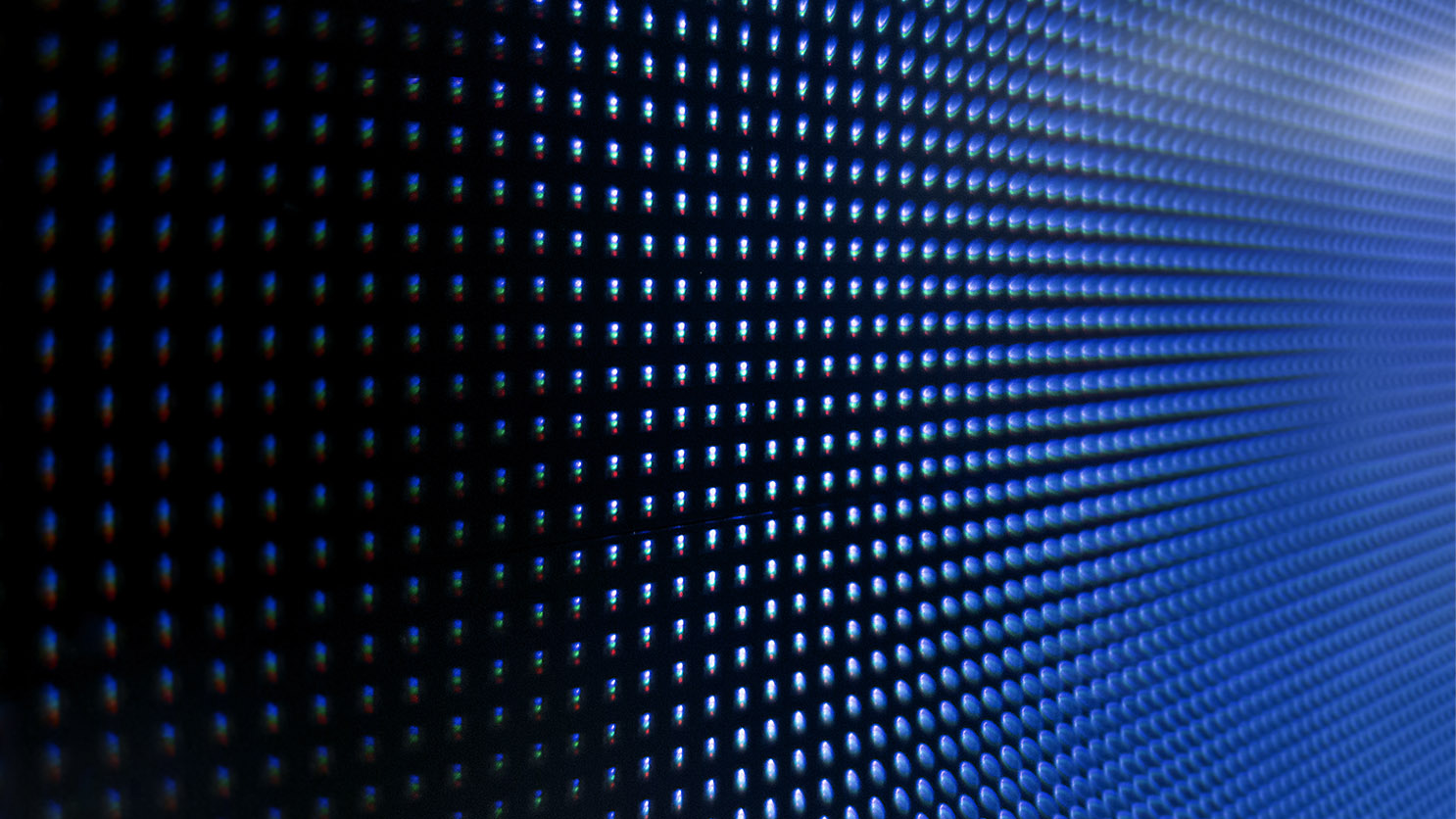Part 5 of 5 in the LED Wall series

Recapping the Basics
Let’s start with a quick overview. LED Walls are composed of individual Pixels that are capable of producing a combination of Red, Green and Blue light. An external Processor controls each individual Pixel to ensure they work together to “paint” an image. Generally, a single LED Panel consists of a quadrant (2x2) that can be removed and serviced. Each quadrant has a specific number of horizontal and vertical pixels; therefore, each Panel has a known total number of Pixels. Add the total number of Panels in the Wall together to determine the total Pixel Count of the entire Wall. This will determine how many Processors will be needed to produce the image. To learn more specifically about Processors, check out this article.
LED Panels and Pixel Pitch
In most cases, an LED Panel is .5 meter tall and .5 meter wide; however, the total Pixel Count is determined by the Pixel Pitch. Pixel Pitch refers to the spacing from center to center of adjacent pixels. Typically this will be represented in millimeters (2.4mm, 3.9mm, etc). A smaller Pixel Pitch means a higher number of individual pixels on a panel, a higher overall resolution and generally a higher cost. (**Note that Pixel Pitch does not consider how large an individual LED pixel is - merely the amount of space from the center of pixel to pixel.)
Determining the required Pixel Pitch comes down to two primary factors. First, you need to know the distance from the LED Wall to the closest Attendee. Ultimately, we want to make sure that the audience cannot distinguish any separations, gaps or lines in the image. Mathematically, a good starting point for Pixel Pitch is to divide the distance (in Feet) of the closest Attendee by 10. For example, if the middle of the front row is 35’ from an LED at the back of the stage, we would start by looking at a Pixel Pitch around 3.5mm (35/10=3.5); however, other factors need to be considered before making a final choice.
We also want to consider the distance from the primary Talent on stage (Pastor, Worship Leader, vocalist, etc) in order to help determine focal distances between the camera and the LED wall. If this distance is very small compared to the distance from the audience, the camera may have a difficult time focusing on the Talent vs LED Wall and cause moire issues.

Let’s take a quick diversion from pixels to discuss moire. Have you ever seen a news anchor wear a shirt with a lot of detail that just doesn’t translate well on camera? Maybe a crosshatch pattern appears wavy, or part of the shirt has a strange rainbow-tinted color on it. Technically, this occurs when the details in the image conflict with the pixel structure of the camera’s sensor. Essentially, the camera struggles to capture and transmit all of the detail correctly. Moire can occur when the rows/columns of pixels on an LED wall are misaligned with the pixels within the camera’s sensor; however, there are multiple options available to address this issue.
Pixel Mask Ratio
Back to Pixels. The next consideration is Pixel Mask Ratio. This is particularly important to help reduce moire on camera. The Pixel Mask Ratio is the relationship between the Pixel Pitch and the size of the actual individual LED pixel itself. Each pixel is essentially mounted inside a tiny square box. The smaller the box, the closer together each pixel can be to each other (pitch); however, we also want to fill the box as much as possible. Smaller pixels allow for a larger quantity and higher detail but generally sacrifice overall brightness. Overall we want the ratio of Pixel Pitch: Pixel Size to be as small as possible. Since LEDs are mass-produced, there are common sizes among the industry; however, we want to pair an appropriately sized Pixel Pitch and Pixel Mask in order to guarantee overall detail, brightness, and clarity.
Pixel Frequency
Lastly, we need to consider the Pixel Frequency tolerance. This ensures that each diode is capable of accurately and consistently producing Red, Green and Blue light across the entire panel. If a manufacturer has a lower tolerance, it will be very difficult (if not impossible) to get different panels to match each other. At the end of the installation, every color on every panel should match. Blue should not be “less blue” or “more blue” on some panels vs others. The goal is a seamless representation of each color across the entire wall. To accomplish this goal, we must calibrate each panel. Quality LED Manufacturers allow for calibration settings to be saved to the panel itself.
If you're curious about budgets or pricing, check out our LED Wall Calculator!
And if you need help determining what LED Wall technology is right for you, let us know. We’d love to help!
{{cta('b3e88da6-31c8-4863-a413-d5b850fd13ec')}} to set up a Discovery Session with our team.